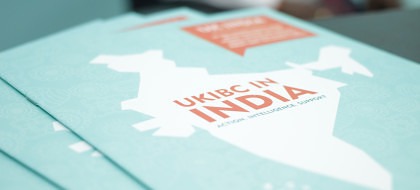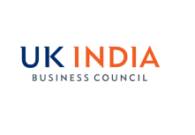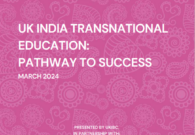Things you might not know about emerging India
The UK India Business Council’s recent 10th anniversary promoted me to reflect on the last decade. It is often said that India changes slowly, but that has always been too much of a generalisation – the change of pace is uneven. What else is to be expected in a democracy with 29 States and wide disparities in income. However, looking back over the span of a decade, it is clear that much has changed: India and its economy are unrecognisable; and India-UK economic relations are much stronger.

India is Unrecognisable Today
The change in India over the last decade, particularly over the last three years under Mr Modi, has been dramatic.
There are impressive macro numbers. The GDP has almost doubled from $1.2 trillion to $2.5 trillion since 2007. The GDP per capita has increased by around 60%. And FDI into India in 2017 is double what it was 10 years ago.
But these numbers don’t really give a sense of how the Indian economy and the lives of Indian’s have transformed. There are many examples of this transformation, but I will focus on only a few.
In 2007, there were 10 million mobile phone users in India. Today there are one billion, and rising.
In 2007, no Indian had an ID card. Today, almost 1.2 billion Indians have a digitally-driven biometric ID card. 1.2 billion and, as the young population continues to grow, still rising. This project – Aadhar – was only initiated in 2009. This is remarkable. And it is only too tempting to make a comparison with the UK, where, in 2007, the UK Parliament was considering the Identity Card Act, which got nowhere and was scrapped in 2010.
In 2007, financial inclusion rarely reached people outside of India’s cities. But, due to the Jan Dhan scheme launched in only 2014, an additional 300 million Indian’s have a bank account.
Taken together with the Goods and Services Tax, which brings all B2B transactions online, the growth in mobile usage, digital ID records, and wider financial inclusion have changed the way people, businesses and government in India function. These transformations lay the foundation for a compelling, digitally-led, India of the future. I’ll return to this later.
UK-India Relations are Unrecognisable Today
So, how has the UK-India partnership changed?
Since 2007, we have seen multi-billion pound major investments in India by the likes of Vodafone, BP and Diageo. And, of course, the traffic is very much two way. Tata Steel bought Corus in 2007. And Tata Motors bought JLR in 2008. Other Indian giants, including Wipro, TCS and HCL have continued to expand their presence in the UK.
Alongside these headline-grabbers, there have been thousands upon thousands of deals done. Partnerships formed by SMEs, universities, and research institutions. The UK-India commercial relationship has clearly gone from strength to strength.
There has also been a significantly more intense political engagement over the last 10 years. Gordon Brown visited India in January 2007. Both David Cameron and Theresa May made India their first bilateral visits. And, of course, PM Modi made his hugely impactful visit in 2015, and will be returning to London in only a few months time.
The UK’s diplomatic engagement with India has also significantly strengthened. Since 2007, the Government has opened four new deputy high commissions, making India the UK’s largest diplomatic network.
The Next 10 Years – a New India
Anniversaries are also a time to look ahead, so where will we be 10 years from now?
According to Morgan Stanley, India will have a $6 trillion dollar economy within 10 years, making it the third largest in the world. The same report also predicts that India’s consumer sectors will grow from $500 million today to $2 trillion within the decade.
Much of this growth will be digitally-driven via the trio of transformations I mentioned earlier – enhanced financial inclusion, smart phone penetration, and the Aadhar scheme.
Internet penetration in India will double in the next 10 years, meaning over 900 million Indians will be online by 2027. Most of them will be online and on the move – of the billion mobile subscriptions in use today, 300 million are smart phones. This will be 700 million in 2020. It is no surprise that, after the UK, India is BT’s second biggest market. It employs a staggering 27,000 people across the country.
This “Digital India” is already driving expansion in e-commerce, fintech, healthcare, manufacturing, and education. Digital disruption – Industry 4.0 – is exciting for India and for the UK. And it is great to see UK-India partnerships being formed. For example, the recent announcement of a TCS-Rolls Royce collaboration, which combines the best of manufacturing with the best of digital.
Many more Indians will be online, and many more will be on the move. The Ahmedabad-Mumbai bullet train is due to be up and running by 2022. I expect more such high speed links by 2027. And, despite the competition from bullet trains, more people will be travelling by air. In 2007, there were 96 million air passenger journeys in India. This year there will be over 220 million. And, by 2027, it is estimated that there will be 700 million passenger journeys per year.
Clean tech will also be a major growth driver in India. The Government of India predicts that 57% of the country’s electricity capacity will come from renewable sources by 2027. And, by 2030, only electric vehicles will be on India’s roads.
The UK-India Relationship
As the UK leaves the EU, our Government has made it clear that it wants to be an advocate of free trade and that it wants to build a stronger economic partnership with India. We will therefore see a UK – our Government and business community – that is more engaged in commercial partnerships across the globe, with India at the forefront.
The UK and India should, and can, be the best of economic partners, across all sectors: defence; aerospace; financial sectors – especially fintech; in all things digital; the energy sector; education; transport and logistics; healthcare and life sciences; and building smart cities in India, the UK and, why not, in the rest of the world.
So, as we enter the UKIBC’s second decade, there are clearly big opportunities for the UK-India partnership. And there is a unique opportunity over the next few months to accelerate and deepen the partnership.
India’s Commerce Minister, Suresh Prabhu, will be in London for the Joint Economic and Trade Committee in January. Then Finance Minister Jaitley will be in the UK for the Economic and Financial Dialogue. And, most importantly, Prime Minister Modi will be in London at the time of the Commonwealth Heads of Government Meeting in April.
India has transformed itself in the last 10 years, and the foundations are in place for another transformation over the next 10. The future will be one of digitally-led disruption, new possibilities, stronger UK-India partnerships, and growing prosperity in both countries.
Written by Kevin McCole, COO, UK India Business Council

 By Kevin McCole
By Kevin McCole 





